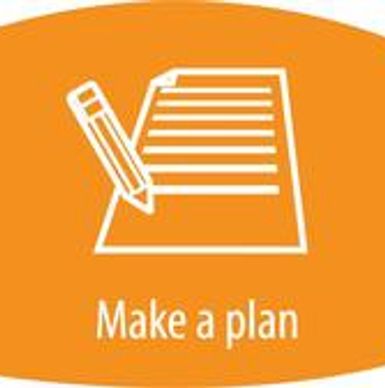Non Emergency-(201) 891-2121 Emergency-9-1-1
Non Emergency-(201) 891-2121 Emergency-9-1-1
Emergency Preparedness
Make a Plan
Make a Plan

The first step in preparing is to make a plan. Plan in advance what you will do in an emergency. Be prepared to assess the situation. Use common sense and whatever you have on hand to take care of yourself and your loved ones.
Develop a Family Communications Plan. Your family may not be together when disaster strikes, so plan how you will contact one another and review what you will do in different situations
Create a Plan to Shelter-in-Place. There are circumstances when staying put and creating a barrier between yourself and potentially contaminated air outside, a process known as sheltering-in-place and sealing the room can be a matter of survival.
Create a Plan to Get Away. Plan in advance how you will assemble your family and anticipate where you will go. Choose several destinations in different directions so you have options in an emergency
Get a Kit
Make a Plan

Be prepared to improvise and use what you have on hand to make it on your own for at least three days, maybe longer. While there are many things that might make you more comfortable, think first about fresh water, food, and clean air.
Consider two kits. In one, put everything you will need to stay where you are and make it on your own. The other should be a lightweight, smaller version you can take with you if you have to get away. You’ll need a gallon of water per person per day for drinking and sanitation. Include in the kits a three day supply of non-perishable foods that are easy to store and prepare such as protein bars, dried fruit or canned foods. If you live in a cold weather climate, include warm clothes and a sleeping bag for each member of the family.
Stay Informed

Some of the things you can do to prepare for the unexpected, such as assembling a supply kit and developing a family communications plan, are the same for both a natural or manmade emergency. However there are significant differences among potential terrorist threats, such as biological, chemical, explosive, nuclear and radiological, which will impact the decisions you make and the actions you take. By beginning a process of learning about these specific threats, you are preparing yourself to react in an emergency. Go to www.ready.gov to learn more about potential terrorist threats and other emergencies or call 1-800-BE-READY (1-800-237-3239) for a free brochure.
Know the risks

Power lines carry high voltage electricity and can be deadly. Always assume that utility lines are “live” – or energized – and keep far away from them. Be especially attentive after wind, ice, or heavy snow storms when wires may have fallen to the ground.
Never let children climb a utility pole, a tower, or a tree near power lines. Kites or balloons that contact power lines can cause shock or fire, so fly them away from overhead lines. NEVER play on, sit on, or climb on electrical equipment of any kind.
When carrying and using ladders and other long tools, keep them at least 10 feet away from all overhead lines – including any lines from the power pole to your home. Look up before raising a ladder or pole to verify that it will not be close to power lines when raised. Use a flashlight or lantern at night to help you see overhead power lines or other hazards.
If you happen to be in a vehicle and wires have fallen on or near it, stay in your vehicle and tell others not to touch the wires or the vehicle. Anyone on the ground who touches your vehicle could be in danger. If the vehicle is safe and is not on fire, stay in the vehicle until an emergency responder indicates it is safe to get out. If you must leave due to other hazards, jump clear of fallen lines. Don’t touch the vehicle and ground at the same time. Land with feet together and hop away with both legs together. Always call 911 as soon as possible.
Know who to contact

Being informed also means knowing who to contact in specific types of emergencies, or what you might consider an emergency. Contacting the wrong entity may mean a delay in the restoration of your services and can be critical in some situations.
a.) Police, Fire, or Medical Emergencies- Immediately dial 9-1-1
b.) Electric Power Outages-
Orange and Rockland customers contact- 1-877-434-4100
PSE&G Customers contact- 1-800-436-PSEG (7734), or Text OUT to 4PSEG (47734)
c.) No Telephone/Cable Service
Verizon customers contact 800-837-4966
Optimum customers contact 888-276-5255.
d.) Downed Electric Power Lines or Telephone Lines -
Immediately dial 9-1-1
e.) Odor of gas- Immediately dial 9-1-1
f.) Deceased animal on private property- (201) 652-4554
g.) Street lights out- Report to PSE&G or Orange and Rockland via portal on their website
Additional Information

For further information on emergency preparedness please visit the following websites, or contact the Wyckoff Office of Emergency Management at OEM@wyckoffpolice.org
FEMA: https://www.ready.gov/
National Safety Council
https://www.nsc.org/home-safety/safety-topics/emergency-preparedness
Center for Disease Control: https://emergency.cdc.gov/
This website uses cookies.
We use cookies to analyze website traffic and optimize your website experience. By accepting our use of cookies, your data will be aggregated with all other user data.